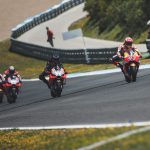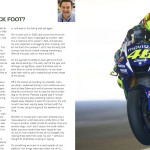Some might call it a threat disguised. Crammed into the Misano World Circuit Marco Simoncelli’s cosy building that makes-do as a conference room after one of this year’s finest rides, Marc Marquez used the occasion to lavish praise on a rival sat only two metres away.
Along with claiming the opponent he fought – and beat – on the last lap of another nail-biting MotoGP contest “was the best rider today,” the reigning world champion described this foe’s efforts and feats through 2019 as ‘incredible.’ “Today he showed you all but I already knew,” Marquez claimed. “He has the talent, the mentality to lead a race, to win a race and next year he will be a tough contender for the championship.”
This was no innocuous compliment, no matter how richly deserved. Marquez was instead throwing the gauntlet down, subtly placing pressure on his rival’s shoulders for the months ahead and observing how he reacts.
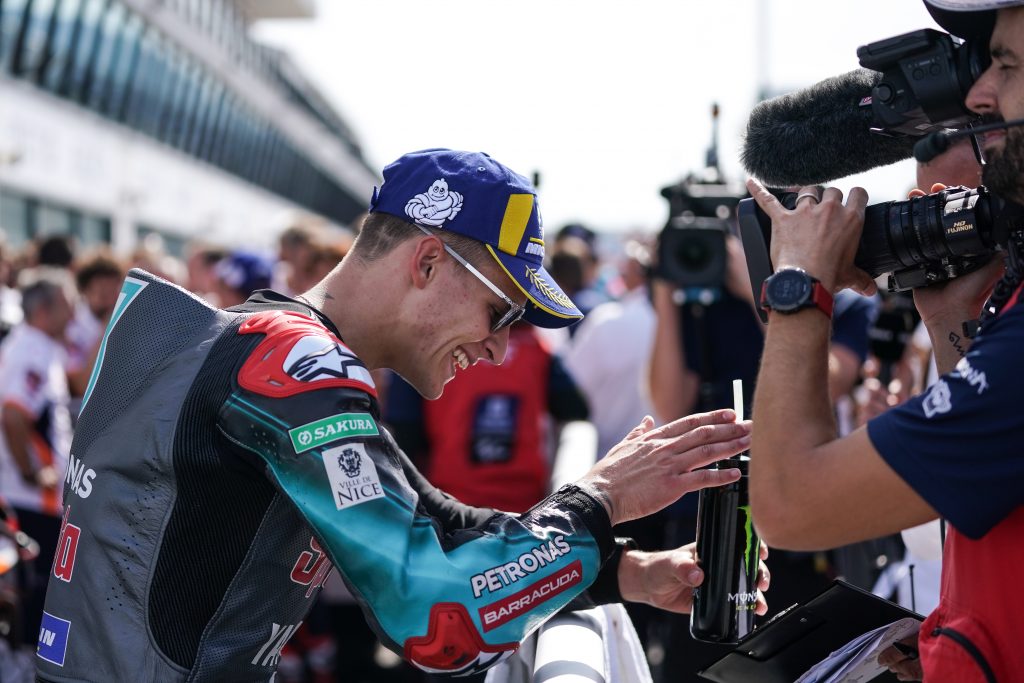
That the rider in question was Fabio Quartararo, the man to Marquez’s right, and not Maverick Viñales, the figure to his left, was a sign of how the two Yamaha men’s fortunes have differed this year. A penny for Viñales’ thoughts when hearing Marquez – the name that has always been his benchmark since their days in the Catalan minibike championship – aiming such words at the rider who could be Yamaha’s new hope.
Let it not be forgotten no more than two years ago the watching world had pinned its hopes on Viñales, the kind of restless figure immersed in his own improvement that would ensure a Doohan-esque era of Marquez dominance would never go unchallenged (at that same point in 2017 Quartararo sat 16th in the Moto2 standings with 42 points to his name). Yet the class rookie is the one now being lauded as the star of the future with Viñales continuing to frustrate.
Feelings can always be deceptive. Viñales is still Yamaha’s top man in this year’s MotoGP championship. He sits two places and 22 points clear of this term’s standout rookie. He also has five podiums to Quartararo’s four, as well as the distinction of landing his factory’s first – and only – race win of the campaign.
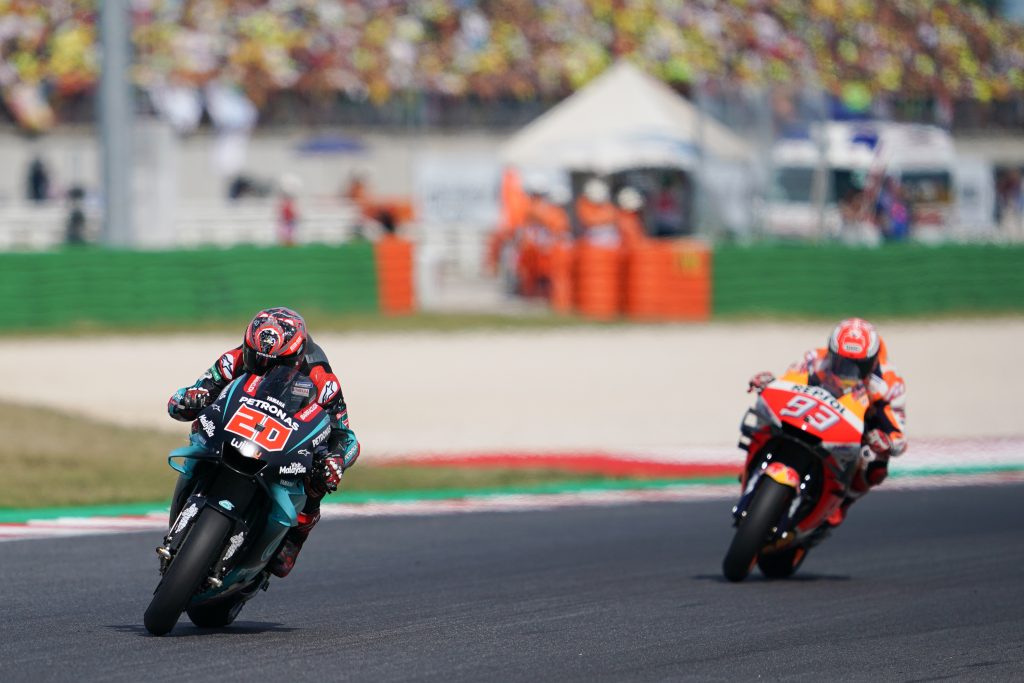
But Quartararo’s debut term has come to be defined by searing one-lap pace, awesome corner speed and an unwillingness to bow to the loftier reputations of his peers. What stands out when assessing Viñales’ 2019, by contrast, is a case of unfulfilled potential and his repeated fall into old failings.
The 13th race of this year was a case in point. Quartararo led all but three of the race’s 27 laps, started well and held his pace toward the end and showed steely resolve in light of Marquez’s relentless pressure. The #93 was ever present, less than 0.3s behind the leader at the finish line for 20 of the 23 laps he trailed him.
All of which came on a track notoriously low on grip, a former Yamaha weakness. There were 69 crashes over the weekend (in dry conditions) after the circuit had air-blasted the surface earlier in the year to remove excessive rubber. The tarmac was slick and the weekend’s relentless sun (track temperatures were 40 degrees) didn’t help. Finding traction was a continued problem, leading Moto3 race winner Tatsuki Suzuki to liken last weekend’s action to “riding in the rain conditions.”
Jack Miller had looked on as the injury list in the junior classes – Mattia Pasini, Marcel Schrotter, Niki Tuuli, Romano Fenati, Can Öncü, Niccolo Antonelli and Niki Tuuli all left Misano with broken bones – as reason to exercise a degree of caution. “It [the lack of grip] goes to show … there’s been f**k’ so many people breaking bones and whatnot. So just to come out of here in one piece with some solid points, I’ll take it.” But there was Quartararo, shrugging off the multiple front end moments he had in qualifying at turn eleven, leading from the front.
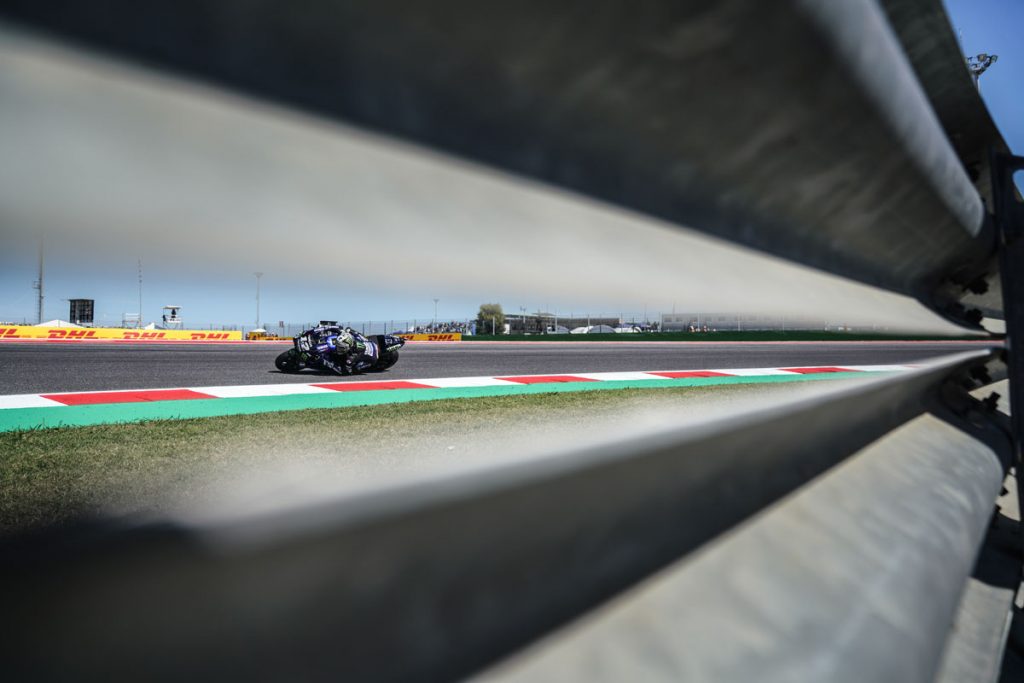
Viñales couldn’t keep up, his afternoon another case of what could have been. When asked what had happened between laps three and eight, when he lost 2.5 seconds to the race leader, he looked exasperated. “I don’t know,” he said. The inability to set a searing pace early in a race when the track remains laden with slippery Dunlop rubber has been a constant trait since he moved to Yamaha in 2017.
So how and why has Quartararo come to usurp his factory stablemate as Yamaha’s next new hope in just 13 races?
The Frenchman’s searing talent has been mentioned here before. But his natural feel for the M1 and its high corner speed capabilities was a source of befuddlement for team-mate Franco Morbidelli. “Fabio is able to make very fast corners, with very high speed, and very little effort. I don’t know how,” he shrugged. Marquez noted this, too: “You can follow the other Yamahas but he is riding in a very good way, very precise, but especially at the fast corners he is very fast.
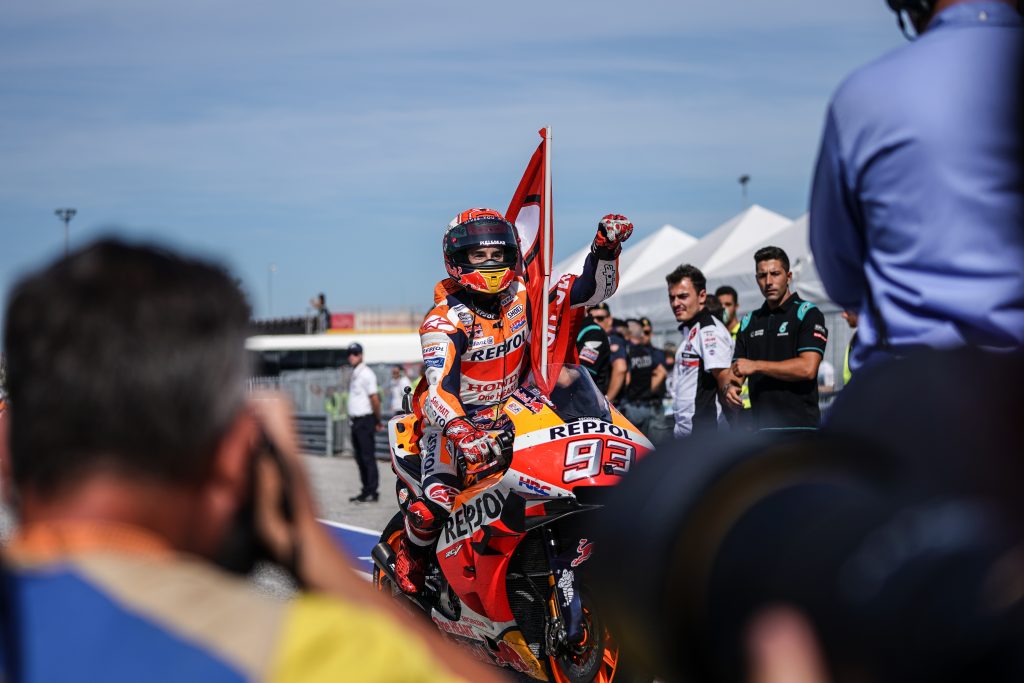
“For that reason, I tried to overtake him before sector three because I checked that if I was behind him before turn eleven (Curvone, the first right on the back straight) I would lose the race. Even with a slipstream I was not able to follow him.” The same could be said of Assen in June and Quartararo’s sheer courage through the track’s fearsome final sector on his run to pole position with a healing right arm. It was a sight to behold.
Yamaha technicians have long talked about the need to ride the M1 in the manner of Jorge Lorenzo. That is, long arcing lines, subtle body movements and a tremendous amount of mid-corner speed. Petronas SRT Yamaha team manager Wilco Zeelenberg has mentioned as much. “He’s very smooth so he suits the Yamaha,” he told me earlier this year. “He understands well how to get the lap time with the bike at the moment. He has space in the head to think about new things. He’s fast but he can create new ways and learn from it. That makes him very special.
“He’s not fixed yet to a kind of style that’s like, ‘This is for Bridgestone [tyres]’, ‘This is Ducati’, ‘This is Honda’; he’s very open-minded to find the lap time with the bike you give him. At the moment this is a very big benefit for him. He’s not interfered with by anything that could be negative for him compared to the past, or even compared with the other Yamaha riders.”
On the other hand, Viñales’ history aboard Suzuki’s GSX-RR, a sweet-handling motorcycle, but one which features considerably different braking characteristics to the M1, means he has never fully adapted himself to the bike.
Back in 2017 it seemed like a barb when Valentino Rossi said his teammate had no “history with Yamaha” and therefore didn’t know how it should react. But one of the reasons he fell out with ex-crew chief Ramon Forcada was his countryman’s belief that the M1 needed a more ‘Lorenzo-esque’ approach.
“Maverick came from the Suzuki,” Zeelenberg said. “Frankie has been on the Honda. That interferes a little bit [because] you are searching for a kind of feeling that maybe is not in the Yamaha or needs another riding style. [Fabio] has no other experience with MotoGP. He just enjoys the beast and goes fast.”
One Yamaha employee told me earlier this year that Viñales’ persistent problems with race starts could be traced back to nerves and the excessive pressure he places on himself more than anything else. At present Quartararo is operating free of such worry, as witnessed by his coolness in the face of Marquez’s unbending pressure.
Viñales’ own story in an example of the perils of bigging-up a rider too much, too soon. He remains one of the class’ leading talents. But he has been perpetually on the cusp of stepping up to Marquez’s level for the best part of 30 months. The rider four years his junior, meanwhile, is doing things aboard the Yamaha that three other ex-world champions can’t do.
It was tough to escape the feeling that Yamaha could well be placing its faith in a new hope when contracts are next up at the end of 2020 as Quartararo dictated events from the front on Sunday.
By Neil Morrison @neilmorrison87
By CormacGP @cormacgp


